Design of an Ultrasound Sensing System for Estimation of the Porosity of Agricultural Soils
Abstract
:1. Introduction
2. Materials and Methods
2.1. Transmitter and Receiver Placement
2.2. Selection of the Frequency of the Transmitted Acoustic Signal
2.3. Selection of the Pulse Duration
2.4. Selection of Transmitter and Receiver Diameters
2.5. Selection of the Angle of Incidence
2.6. Transmitter and Receiver Arrays
2.7. Data Acquisition
2.8. System Gain and Acoustic Beam Shape
3. Results
4. Discussion
5. Conclusions
Author Contributions
Funding
Institutional Review Board Statement
Informed Consent Statement
Data Availability Statement
Acknowledgments
Conflicts of Interest
References
- Doran, J.W.; Zeiss, M.R. Soil Health and Sustainability: Managing the Biotic Component of Soil Quality. Appl. Soil Ecol. 2000, 15, 3–11. [Google Scholar] [CrossRef]
- Lehmann, J.; Bossio, D.A.; Kögel-Knabner, I.; Rillig, M.C. The Concept and Future Prospects of Soil Health. Nat. Rev. Earth Environ. 2020, 1, 544–553. [Google Scholar] [CrossRef]
- Shahane, A.A.; Shivay, Y.S. Soil Health and Its Improvement Through Novel Agronomic and Innovative Approaches. Front. Agron. 2021, 3, 680456. [Google Scholar] [CrossRef]
- Leclaire, P. Characterization of Porous Absorbent Materials. In Proceedings of the Acoustics 2012, Nantes, France, 23–27 April 2012; Volume hal-00810634. [Google Scholar]
- Nimmo, J.R. Porosity and Pore Size Distribution. In Reference Module in Earth Systems and Environmental Sciences; Elsevier: Amsterdam, The Netherlands, 2013; p. B9780124095489052659. ISBN 978-0-12-409548-9. [Google Scholar]
- Adamchuk, V.I.; Rossel, R.A.V. Development of On-the-Go Proximal Soil Sensor Systems. In Proximal Soil Sensing; Viscarra Rossel, R.A., McBratney, A.B., Minasny, B., Eds.; Springer: Dordrecht, The Netherlands, 2010; pp. 15–28. ISBN 978-90-481-8859-8. [Google Scholar]
- Rossel, R.A.V.; Adamchuk, V.I.; Sudduth, K.A.; McKenzie, N.J.; Lobsey, C. Chapter Five—Proximal Soil Sensing: An Effective Approach for Soil Measurements in Space and Time. In Advances in Agronomy; Sparks, D.L., Ed.; Academic Press: Cambridge, MA, USA, 2011; Volume 113, pp. 243–291. [Google Scholar]
- Silvero, N.E.Q.; Demattê, J.A.M.; Minasny, B.; Rosin, N.A.; Nascimento, J.G.; Albarracín, H.S.R.; Bellinaso, H.; Gómez, A.M.R. Chapter Three—Sensing Technologies for Characterizing and Monitoring Soil Functions: A Review. In Advances in Agronomy; Sparks, D.L., Ed.; Academic Press: Cambridge, MA, USA, 2023; Volume 177, pp. 125–168. [Google Scholar]
- Viscarra Rossel, R.; McKenzie, N.; Grundy, M. Using Proximal Soil Sensors for Digital Soil Mapping. In Digital Soil Mapping: Bridging Research, Environmental Application, and Operation; Springer: Berlin/Heidelberg, Germany, 2010; Volume 2, pp. 79–92. ISBN 978-90-481-8862-8. [Google Scholar]
- Babaeian, E.; Sadeghi, M.; Jones, S.B.; Montzka, C.; Vereecken, H.; Tuller, M. Ground, Proximal, and Satellite Remote Sensing of Soil Moisture. Rev. Geophys. 2019, 57, 530–616. [Google Scholar] [CrossRef]
- Hardie, M. Review of Novel and Emerging Proximal Soil Moisture Sensors for Use in Agriculture. Sensors 2020, 20, 6934. [Google Scholar] [CrossRef]
- Ghose, R.; Slob, E.C. Quantitative Integration of Seismic and GPR Reflections to Derive Unique Estimates for Water Saturation and Porosity in Subsoil. Geophys. Res. Lett. 2006, 33, 1–4. [Google Scholar] [CrossRef]
- Brennan, M.J.; To, W.M. Acoustic Properties of Rigid-Frame Porous Materials—An Engineering Perspective. Appl. Acoust. 2001, 62, 793–811. [Google Scholar] [CrossRef]
- Salomons, E.M. Computational Atmospheric Acoustics; Springer Science & Business Media: Berlin/Heidelberg, Germany, 2001; ISBN 978-1-4020-0390-5. [Google Scholar]
- Hawke, R.; McConchie, J. In Situ Measurement of Soil Moisture and Pore-Water Pressures in an ‘Incipient’ Landslide: Lake Tutira, New Zealand. J. Environ. Manag. 2011, 92, 266–274. [Google Scholar] [CrossRef] [PubMed]
- Medwin, H.; Clay, C.S. Fundamentals of Acoustical Oceanography; Applications of Modern Acoustics; Academic Press: London, UK, 1997; ISBN 978-0-08-053216-5. [Google Scholar]
- Govers, G.; Takken, I.; Helming, K. Soil Roughness and Overland Flow. Agronomie 2000, 20, 131–146. [Google Scholar] [CrossRef]
- Hannaway, D.B.; Evers, G.W.; Fales, S.L.; Hall, M.H.; Fransen, S.C.; Ball, D.M.; Johnson, S.W.; Jacob, I.H.; Chaney, M.; Lane, W.; et al. Perennial Ryegrass for Forage in the USA. In Ecology, Production, and Management of Lolium for Forage in the USA; John Wiley & Sons, Ltd.: Hoboken, NJ, USA, 1997; pp. 101–122. ISBN 978-0-89118-603-8. [Google Scholar]
- Legg, M.; Bradley, S. Ultrasonic Proximal Sensing of Pasture Biomass. Remote Sens. 2019, 11, 2459. [Google Scholar] [CrossRef]
- Prabhu, K.M.M. Window Functions and Their Applications in Signal Processing, 1st ed.; CRC Press: Singapore, 2013; ISBN 978-981-4463-08-9. [Google Scholar]
- Born, M.; Wolf, E. Principles of Optics: 60th Anniversary Edition. Available online: https://www.cambridge.org/core/books/principles-of-optics/9D54D6FF0317074912CB285C3FF7341C (accessed on 22 June 2023).
- Cheon, Y.; Muschinski, A. Closed-Form Approximations for the Angle-of-Arrival Variance of Plane and Spherical Waves Propagating through Homogeneous and Isotropic Turbulence. J. Opt. Soc. Am. A 2007, 24, 415. [Google Scholar] [CrossRef]
- Jasiewicz, J.; Zwolinski, Z.; Mitasova, H.; Hengl, T. Geomorphometry for Geosciences; Bogucki Wydawnictwo Naukowe: Poznań, Poland, 2015; ISBN 978-83-7986-059-3. [Google Scholar]
- Thomsen, L.M.; Baartman, J.E.M.; Barneveld, R.J.; Starkloff, T.; Stolte, J. Soil Surface Roughness: Comparing Old and New Measuring Methods and Application in a Soil Erosion Model. Soil 2015, 1, 399–410. [Google Scholar] [CrossRef]
- Klute, A. Methods of Soil Analysis, Part 1, Physical and Mineralogical Methods. In Agronomy Monographs, 2nd ed.; American Society of Agronomy: Madison, WI, USA, 1986; Volume 9. [Google Scholar]
- Grundy, L.; Ghimire, C.; Snow, V. Characterisation of Soil Micro-Topography Using a Depth Camera. MethodsX 2020, 7, 101144. [Google Scholar] [CrossRef] [PubMed]
- Fellah, Z.E.A.; Berger, S.; Lauriks, W.; Depollier, C.; Aristégui, C.; Chapelon, J.-Y. Measuring the Porosity and the Tortuosity of Porous Materials via Reflected Waves at Oblique Incidence. J. Acoust. Soc. Am. 2003, 113, 2424–2433. [Google Scholar] [CrossRef] [PubMed]
- Fellah, Z.E.A.; Berger, S.; Lauriks, W.; Depollier, C.; Fellah, M. Measuring the Porosity of Porous Materials Having a Rigid Frame via Reflected Waves: A Time Domain Analysis with Fractional Derivatives. J. Appl. Phys. 2003, 93, 296–303. [Google Scholar] [CrossRef]
- Fellah, Z.E.A.; Mitri, F.G.; Depollier, C.; Berger, S.; Lauriks, W.; Chapelon, J.Y. Characterization of Porous Materials with a Rigid Frame via Reflected Waves. J. Appl. Phys. 2003, 94, 7914. [Google Scholar] [CrossRef]


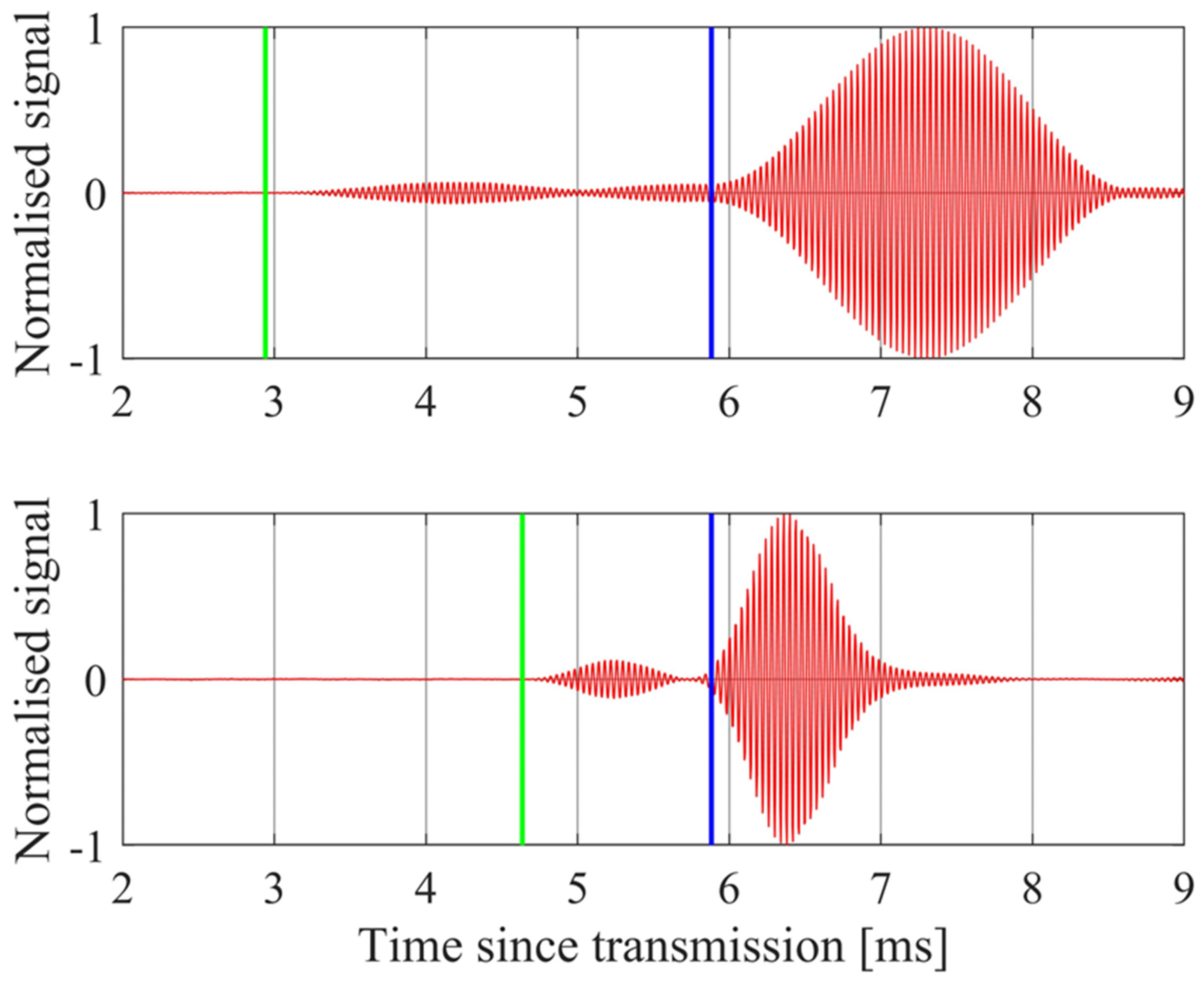

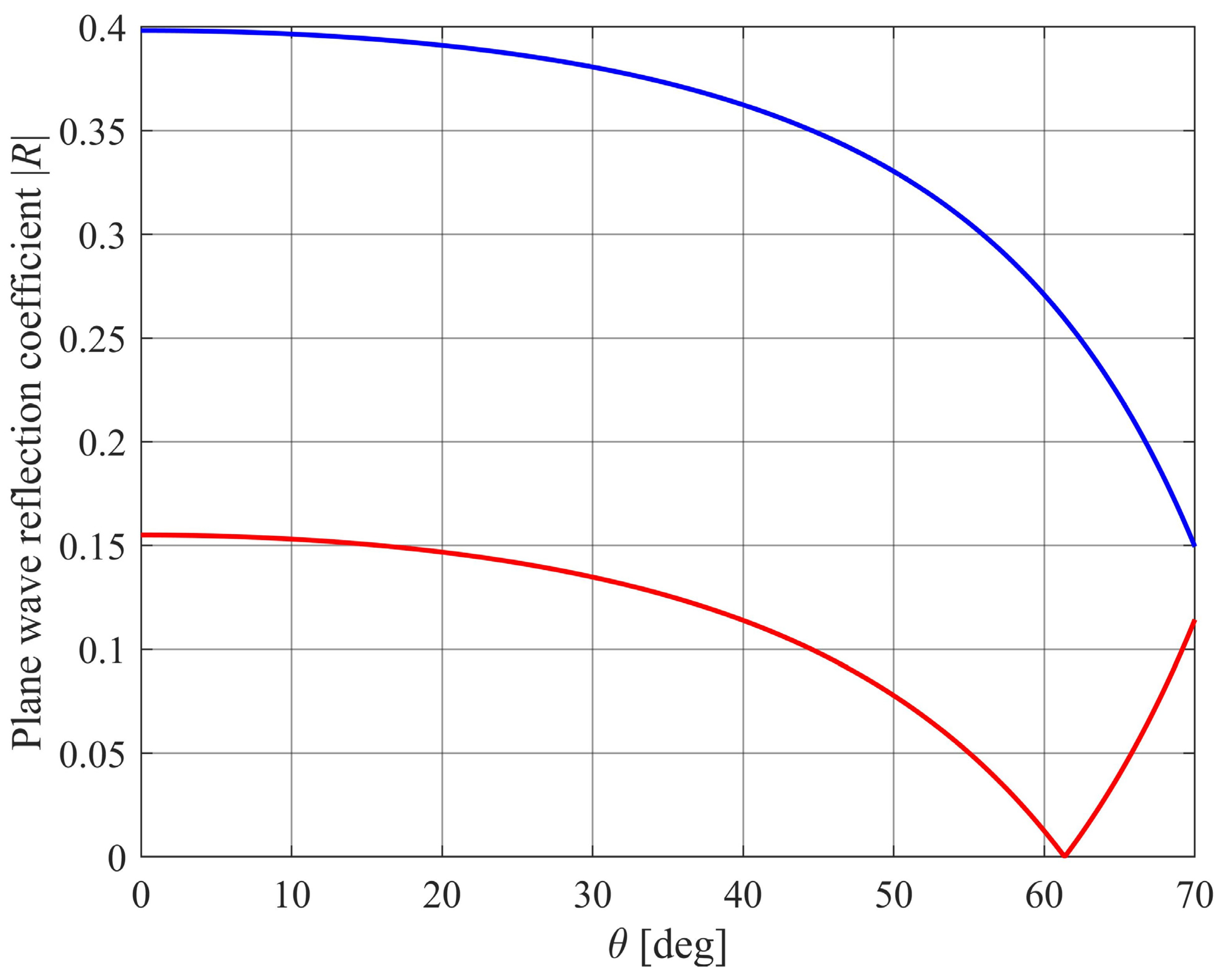




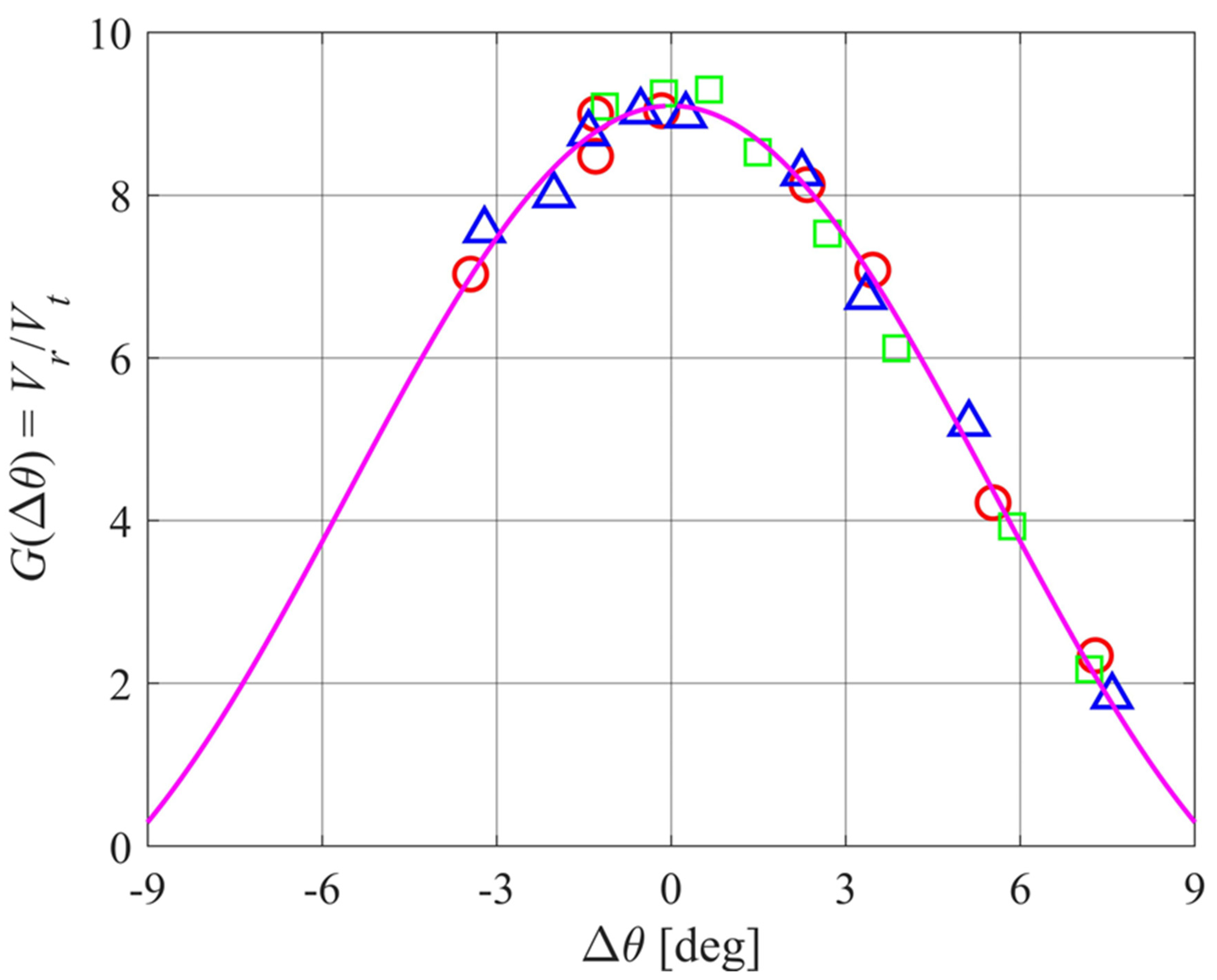
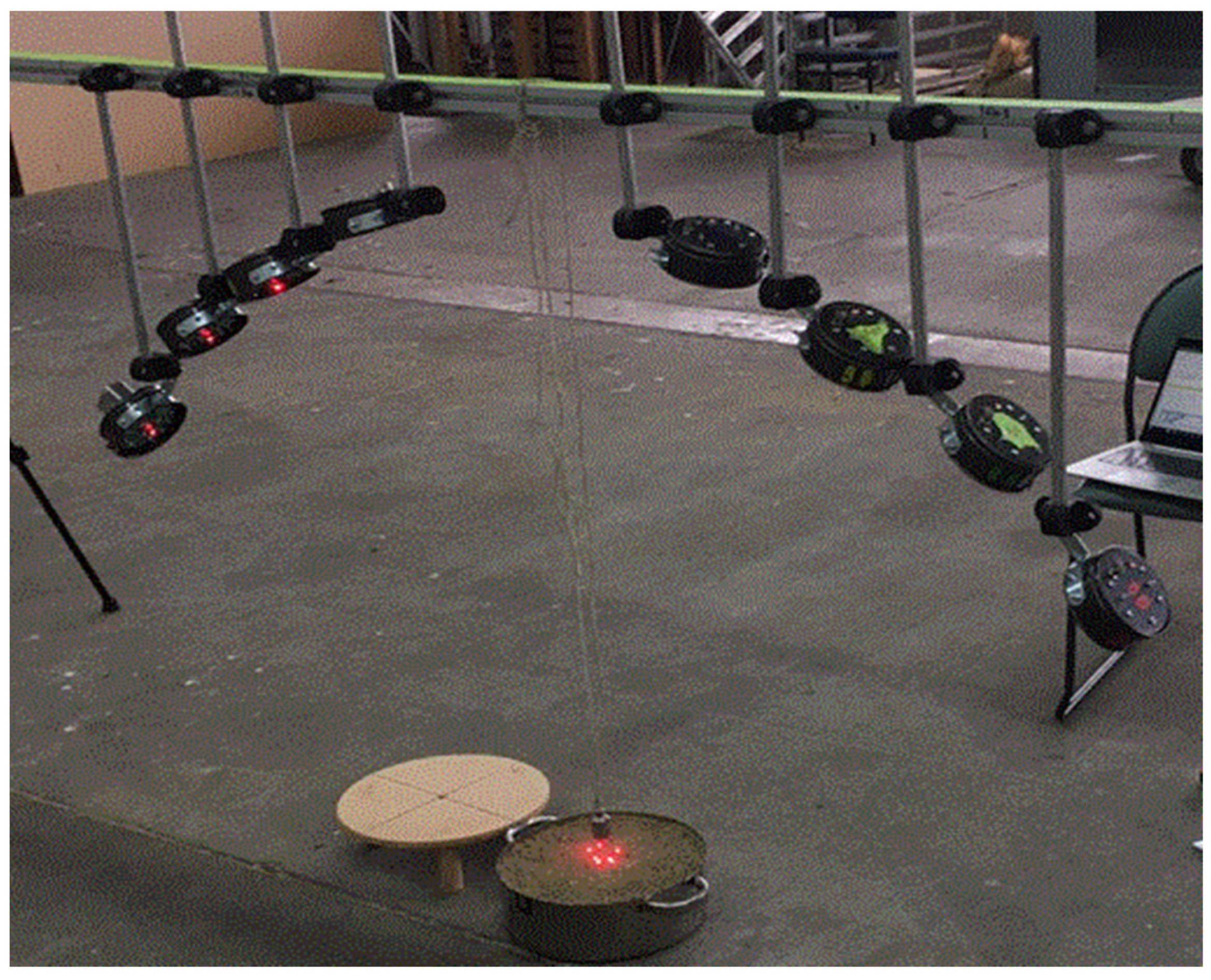

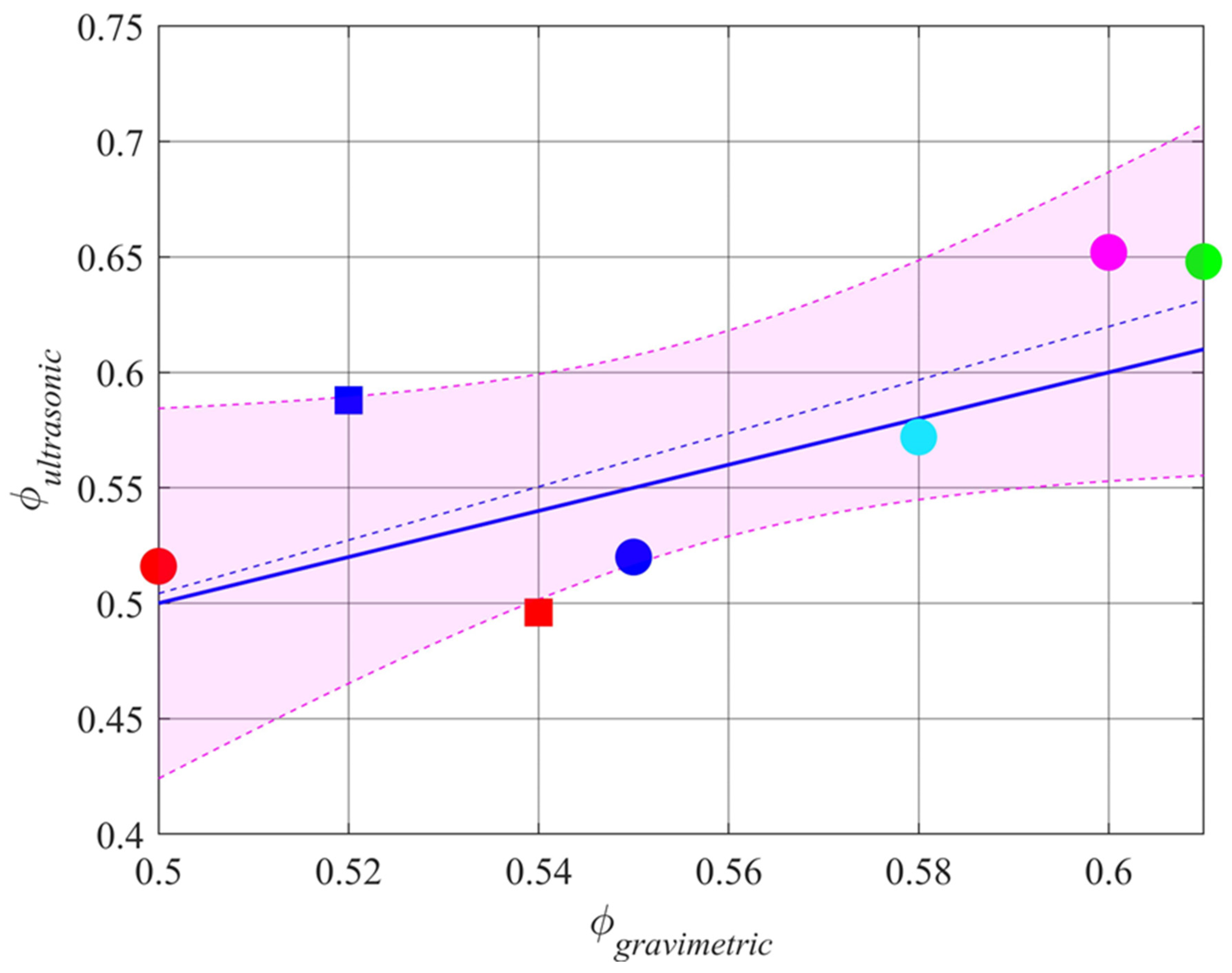
| Soil | ϕultrasound | ϕgravimetric | σh (mm) | α∞, ultrasonic |
|---|---|---|---|---|
| 1 | 0.52 | 0.55 | 0.00 | 1.99 |
| 2 | 0.52 | 0.50 | 1.23 | 1.93 |
| 3 | 0.65 | 0.61 | 1.53 | 1.30 |
| 4 | 0.65 | 0.60 | 2.10 | 1.22 |
| 5 | 0.57 | 0.58 | 1.62 | 1.20 |
| 6 | 0.59 | 0.52 | 1.44 | 1.96 |
| 7 | 0.50 | 0.54 | 1.44 | 1.28 |
Disclaimer/Publisher’s Note: The statements, opinions and data contained in all publications are solely those of the individual author(s) and contributor(s) and not of MDPI and/or the editor(s). MDPI and/or the editor(s) disclaim responsibility for any injury to people or property resulting from any ideas, methods, instructions or products referred to in the content. |
© 2024 by the authors. Licensee MDPI, Basel, Switzerland. This article is an open access article distributed under the terms and conditions of the Creative Commons Attribution (CC BY) license (https://creativecommons.org/licenses/by/4.0/).
Share and Cite
Bradley, S.; Ghimire, C. Design of an Ultrasound Sensing System for Estimation of the Porosity of Agricultural Soils. Sensors 2024, 24, 2266. https://doi.org/10.3390/s24072266
Bradley S, Ghimire C. Design of an Ultrasound Sensing System for Estimation of the Porosity of Agricultural Soils. Sensors. 2024; 24(7):2266. https://doi.org/10.3390/s24072266
Chicago/Turabian StyleBradley, Stuart, and Chandra Ghimire. 2024. "Design of an Ultrasound Sensing System for Estimation of the Porosity of Agricultural Soils" Sensors 24, no. 7: 2266. https://doi.org/10.3390/s24072266





